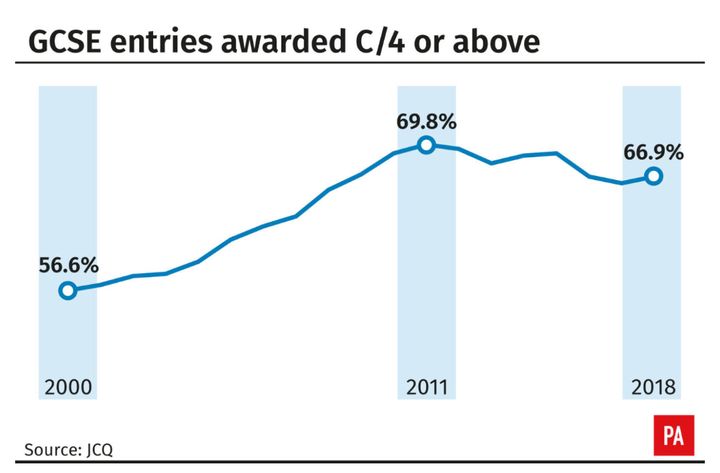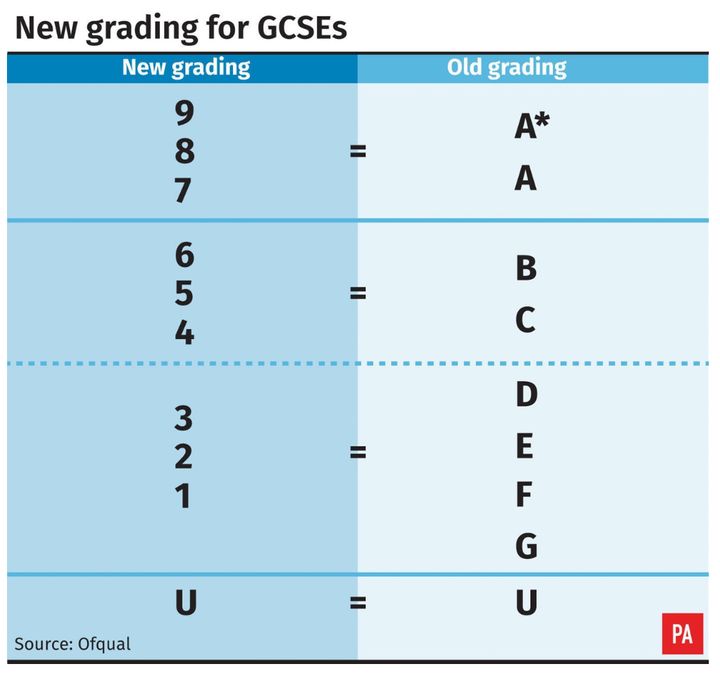GCSE pass rates rose this year in the wake of the biggest shake-up of the exams for a generation.
Overall, one in five UK GCSE entries (20.5 percent) scored at least an A grade – or 7 under the new grading system – up 0.5 percentage points on last year, according to data published by the Joint Council for Qualifications (JCQ).
And about two thirds (66.9 percent) were awarded a C, or a 4, also up 0.5 percentage points compared with 2017.
Just 732 16-year-olds in England taking at least seven new GCSEs scored a clean sweep of top 9 grades in all subjects. Of these, 278 were male, (38 percent) and 454 (62 percent) were female.

The overall rise come after major reforms in England designed to toughen up the qualifications and the introduction of the new 9-1 grading system, replacing traditional A*-G grades.
A new grade 7 is broadly equivalent to an A and a grade 4 broadly equivalent to a C.
There is also less coursework in new GCSEs and students take exams at the end of the two-year courses, rather than throughout.
The vast majority of entries in England were for the new-style GCSEs this year, with 20 subjects, including the sciences, popular foreign languages, history and geography moving over to the new system.

They join English and maths, which were awarded numerical grades for the first time last summer.
A smaller proportion of entries were awarded a grade 9 this summer compared with A* under the old system.
It follows a deliberate move to allow more differentiation among the brightest candidates and to “keep pace with universities’ and employers’ demands”, according to exam regulator Ofqual.
There are now three top grades (7, 8 and 9) compared with two (A and A*) previously.
Figures for England alone also show a rise in results generally.
In total, 20.3 percent of all entries from English candidates (for both new and old-style GCSEs) scored at least an A or a 7, up from 19.8 percent last year.
And 66.6 percent scored at least a C or 4, up from 66.1 percent in 2017.

Today’s results also show that across the UK:
– Boys are closing the gap with girls at top grades: 17.2% of boys’ entries scored an A or a 7, up from 16.4% last year, while girls’ remained static at 23.7%.
– UK entries for GCSE computing are up 11.8%.
– UK entries for modern foreign languages are holding steady, up 0.4% this year.
– The most popular GCSE this year was science double award, making up 14.6% of entries, followed by maths, English and English literature.
– Biology has seen the biggest increase in candidates, with entry numbers up 23%. This was followed by the other two sciences, with chemistry entries up 18.6% and physics up 17.2%.
